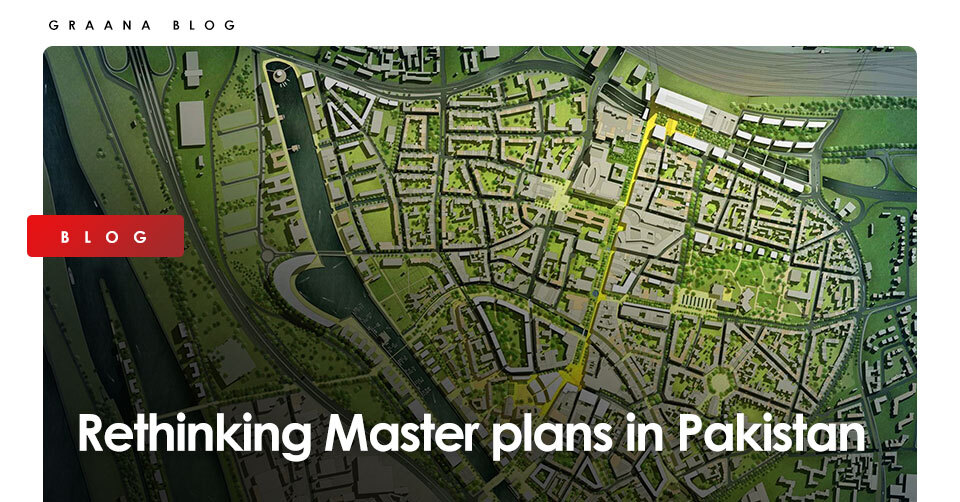
Cities are considered the engines of economic growth; from the literature of the evolution of cities. It can be deduced that urban centres worldwide have evolved owing to the cities being hubs of trade. If observed keenly, life in cities is organized around commerce and trade, and the people in the cities move from rural areas to do business or work in the country’s services sector. Population growth, increasing businesses, and expanding opportunities in the city are diminishing the boundaries between city and villages.
Graana.com, through this blog, highlights why there is a need to rethink the master plans of the city. Travelling through GT Road, we can observe that the boundaries between cities and suburban areas have diminished haphazardly. It is difficult to differentiate between the boundaries of Lahore and its periphery because the city administrations have been unable to implement the master plans.
Urban regeneration has always dominated a special place in policymaking. Providing quality services and lifestyles has emerged as a challenge for the authorities, and governments have dedicated numerous resources for comprehensive planning; however, cities have been expanding in a disoriented manner. Despite adopting various investment strategies, the practical solutions are not in foresight. This is probably because our master plans of the cities are obsolete in managing the contemporary needs of the cities.
Simply put, masterplans are the blueprints of a city’s development as they act as a guide to the city’s development. Masterplans are all about the farsightedness of the urban planner since it interconnects social and economic aspects of our daily lives along with providing housing and leisure activities to urbanites. Masterplans are dynamic and should be altered as per the requirements of the city.
The new thinking in the master plan should revolve around the following
It is the right time that the master plan in Pakistan should include vertical development in their master plans. As the influx of people is increasing in the cities and housing demand is also increasing, vertical development can be a panacea to all of these issues. For making this a reality, the civic authorities should alter their by-laws in favour of vertical development. One of the advantages of vertical development is that it increases, provides mobility, provides easy access and reduces unnecessary congestion.
The public should also have a say in the development of master plans. It has been observed that the master plans of the cities of Pakistan are criticized for not including the inputs of the public. Moreover, the master plans are considered a product of an elitist mindset that only caters to the interests of a very few people in the city. As a remedy, the master plans should focus on accommodating the peripheral segments of the society as the cities promote inclusive and sustainable development.
One of the major problems that Pakistani cities are contemporarily facing is the exponential increase in vehicles and redundant public transport. Modern cities across the world are discouraging the use of private vehicles as it causes environmental pollution and chokes the avenues of the cities. Against this backdrop, the new thinking on the master plan should give attention to mobility issues and encourage the use of public transport. Similarly, the new master plans should emphasize encouraging pedestrian movement as it is one of the practical tools for avoiding vehicles in the city.
Cities contribute in a myriad of ways to the development of a country. As mentioned earlier, the nature of cities has evolved owing to the business activities taking place in an urban locality. One of the advantages of vertical development is that it increases, provides mobility, provides easy access and reduces unnecessary congestion. one thing that is pertinent to mention here is that trade hubs or business centres should be planned in a manner that people can easily access these centres without resorting to the use of vehicles. The new master plans should have a special place for the business centres in the cities as economic activity is a key to economic growth.
Finally, there should be one authority responsible for implementing a master plan. In Pakistan, the situation is quite contrary; there are various departments responsible for governing a city. Problems exacerbate when there is no clear distinction between the responsibilities of multiple authorities and the departments lack harmony. As a result, the master plan of the cities hangs in the balance, and the development plans become ineffective. Similarly, there is also a need to strengthen the local government system as the people can directly give their feedback in the implementation of the master plans.
For more informative articles, visit Graana blog.
ISLAMABAD: The Capital Development Authority (CDA) and the Asian Development Bank (ADB) have entered into…
Islamabad: The Capital Development Authority (CDA) has announced plans to issue possession letters to allottees…
Islamabad, [24 March 2025] – Graana.com, Pakistan's leading online real estate marketplace, is proud to…
Islamabad, Pakistan – March 2025: Graana.com, Pakistan’s leading real estate platform, has proudly partnered with…
KARACHI: Sindh Local Government Minister Saeed Ghani chaired a meeting on Monday to review measures…
ISLAMABAD: The Capital Development Authority (CDA) has unveiled plans to develop a modern food street…